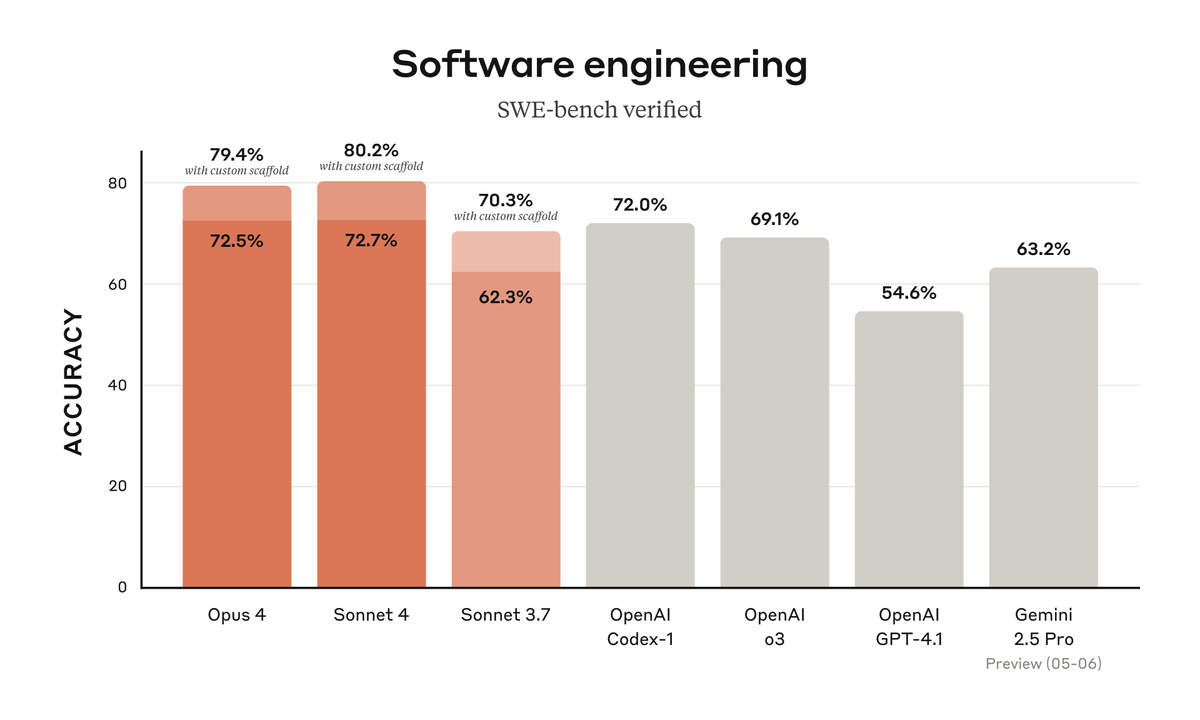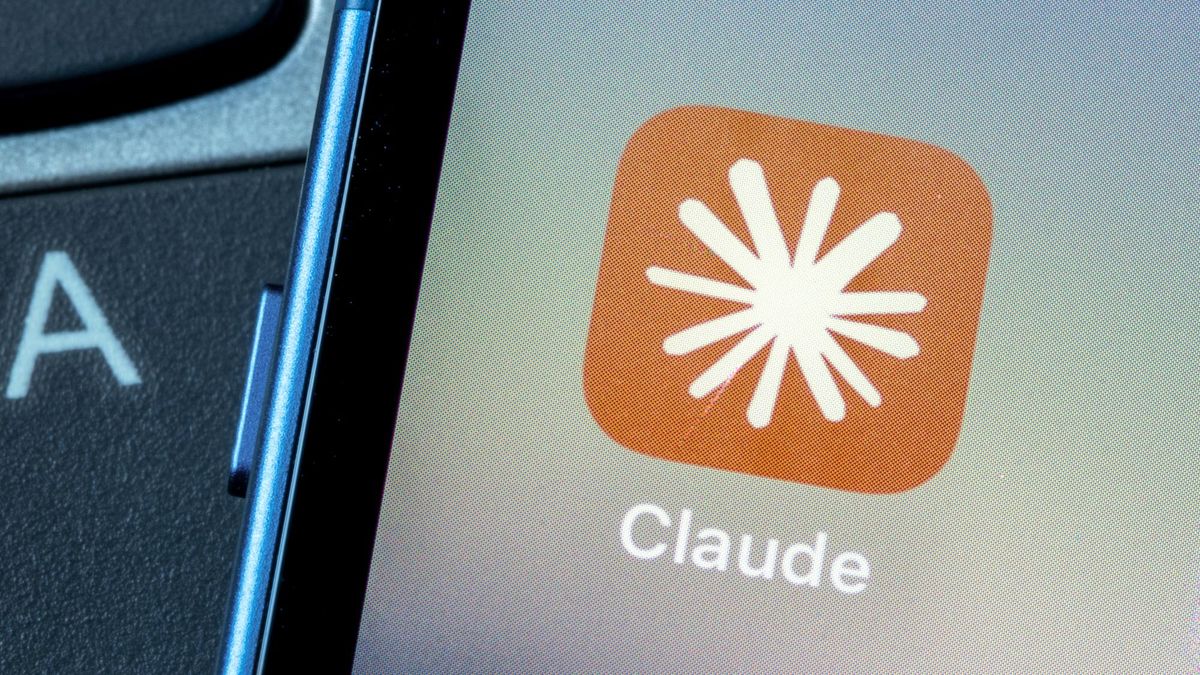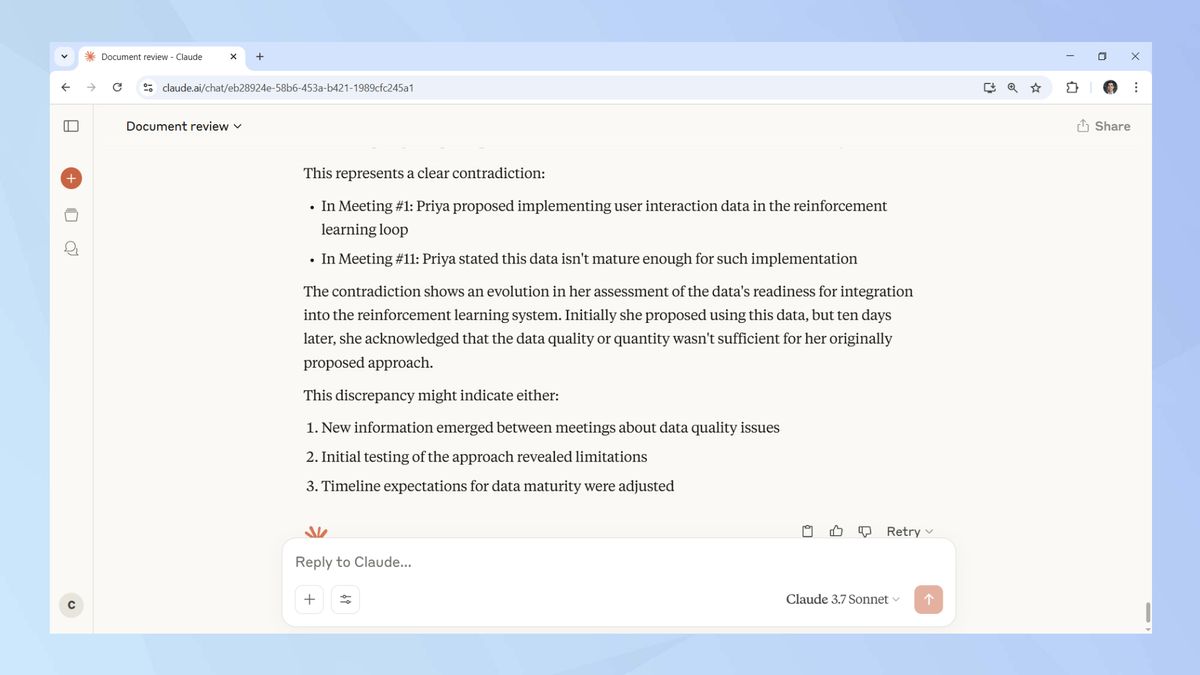Claude, developed by the AI safety startup Anthropic, has been pitched as the ethical brainiac of the chatbot world. With its focus on transparency, helpfulness and harmlessness (yes, really), Claude is quickly gaining traction as a trusted tool for everything from legal analysis to lesson planning.
But what exactly is Claude? How does it work, what makes it different and why should you use it? Here’s everything you need to know about the AI model aiming to be the most trustworthy assistant on the internet.
What is Claude?
(Image credit: Anthropic)
Claude is a conversational AI model (yet, less chatty than ChatGPT) built by Anthropic, a company founded by former OpenAI researchers with a strong focus on AI alignment and safety.
You may like
Named after Claude Shannon (aka the father of information theory), this chatbot is designed to be:
- Helpful for tasks like summarizing documents, coding, writing, and research
- Honest by explaining limitations and avoiding misleading or false answers
- Harmless, actively avoiding unethical or dangerous content generation
At its core, Claude is a large language model (LLM) trained on massive datasets. But what sets it apart is the “Constitutional AI” system — a novel approach that guides Claude’s behavior based on a written set of ethical principles, rather than human thumbs-up/down during fine-tuning.
How does Claude work?

(Image credit: Future)
Claude runs on the latest version of Anthropic’s model family (currently Claude 3.7 Sonnet), and it’s packed with standout features:
- Constitutional AI framework. Instead of relying on hidden human feedback, Claude evaluates its own responses against a “constitution” — a list of rules like Don’t generate harmful advice or Explain reasoning clearly. Almost as built-in AI values.
- Massive context window. Claude can handle up to 200,000 tokens of input — roughly 150,000 words — meaning it can analyze full books, codebases, or long email threads without losing context.
- Extended Thinking Mode. Claude 3.7 Sonnet introduces a hybrid reasoning model that allows users to choose between rapid responses and more thoughtful, step-by-step reasoning. This model integrates both capabilities into a single framework, eliminating the need for multiple models. Users can control how long the model “thinks” about a question, balancing speed and accuracy based on their needs.
- Artifact creation. Claude can create standalone artifacts for code, documents, diagrams and other structured content during conversations. This makes it easier to collaborate on creative writing, programming projects or technical documentation without cluttering the chat interface. These Artifacts can be published and shared with other users or kept private.
Context window: Up to 1 million tokens
One of Claude’s standout features is its massive context window. Most users get around 200,000 tokens by default — that’s equivalent to about 500 pages of text — but in certain enterprise or specialized use cases, Claude can handle up to 1 million tokens. This is especially useful for summarizing research papers, analyzing long transcripts or comparing entire books.
Now that Claude includes vision capabilities, this huge context window becomes even more powerful. Claude can analyze images, graphs, screenshots and charts, making it an excellent assistant for tasks like data visualization, UI/UX feedback, and even document layout review.
Which Claude model is right for you?

(Image credit: Anthropic)
Anthropic’s Claude family has become one of the most talked-about alternatives to ChatGPT and Gemini.
Whether you’re looking for a fast, lightweight assistant or a model that can deeply analyze documents, code or images, there’s a Claude model that fits the bill.
Here’s a breakdown of the Claude 3 series, including the latest Claude 3.7 Sonnet, to help you decide which one best suits your needs.
Claude Opus 4
Claude Opus 4 and Sonnet 4 are Anthropic’s most advanced AI models yet, built to handle complex tasks with deeper reasoning, better memory, and smarter tool use.
Opus 4 is the flagship model, designed for long-running, high-context work like research, writing, and code execution. It can operate autonomously for up to seven hours and excels at maintaining context across extended sessions.
Claude Sonnet 4
Sonnet 4 is a faster, more efficient alternative — ideal for quick yet thoughtful tasks like content creation, education, and planning.
Both models feature hybrid reasoning, enhanced instruction-following, and the ability to use tools like web search and file analysis in real time.
Claude 3.5 Haiku
Best for: Real-time responses, customer service bots, light content generation
Claude 3.5 Haiku is the fastest and most efficient model in the Claude lineup. It’s optimized for quick, cost-effective replies, making it helpful for apps or scenarios where speed matters more than deep reasoning.
Pros: Extremely fast and affordable
Cons: Less capable at handling complex or multi-step reasoning tasks
Claude 3.5 Sonnet
Best for: Content creation, coding help and image interpretation
Sonnet strikes a solid balance between performance and efficiency. It features improved reasoning over Haiku and has solid multimodal capabilities, meaning it can understand images, charts, and visual data.
Pros: Good for nuanced tasks, better reasoning and vision support
Cons: Doesn’t go as deep as Opus on complex technical or logical problems
Claude 3 Opus
Best for: Advanced reasoning, coding, research and long-form content
Opus is Anthropic’s most advanced model. It excels at deep analysis, logic, math, programming, and creative work. If you’re doing anything complex — from building software to analyzing legal documents — this is the model you want.
Pros: State-of-the-art reasoning and benchmark-beating performance
Cons: Slower and more expensive than Haiku or Sonnet
Claude 3.7 Sonnet
With the release of Claude 3.7 Sonnet, Anthropic introduces the first hybrid reasoning model, allowing users to choose between quick responses and deeper, step-by-step thinking within the same interface.
Key features of Claude 3.7 Sonnet:
Claude 3.7 Sonnet is already outperforming its predecessors and many competitors across standard benchmarks:
SWE-bench verified: 70.3% accuracy in real software tasks
TAU-bench: Top-tier performance in real-world decision-making
Instruction following: Excellent at breaking down and executing multi-step commands
General reasoning: Improved logic puzzle and abstract thinking ability
Pricing: Users can try it for free, with restrictions. Otherwise, $3 per million input tokens, $15 per million output tokens (same as previous Sonnet versions).
FAQ

(Image credit: Future)
- Is Claude free to use? Yes, up to a certain limit. Claude Pro ($20/month) unlocks access to Claude 3.7 Sonnet, extended thinking mode, and higher usage limits.
- Can Claude browse the internet? Yes, but only with a paid account. The free tier does not allow that yet.
- Can Claude generate images? No, currently Claude is limited to text-based output via the chat. However, you can upload images for Claude to work with.
- Is Claude better than ChatGPT? Depends on your needs. Claude is arguably more ethical and analytical, while ChatGPT is more creative and plugged-in to the internet.
- Is Claude safe for kids? While there are strong safeguards in place, supervision is always recommended for any AI interaction with children.
- Does Claude have an app? Yes, for both Android and iOS devices.
- How does Claude handle personal data? Anthropic has strong privacy policies, but users should always be cautious about sharing sensitive information with any AI system.
- Can Claude write code? Yes, Claude is quite capable at writing, explaining and debugging code across multiple programming languages.
Limitations
Although Claude has the capacity to search the web, it is not free like ChatGPT, Gemini or Perplexity. Users interested in looking up current events, news and information in real time would need a Pro account.
Sometimes the chatbot is overly cautious and may decline boderline queries, even ones that may seem otherwise harmless. It may flag biased content.
The chatbot is not as chatty and emotional as ChatGPT. Conversations with other chatbots may feel more natural.
Claude lacks the extensive plugin marketplace of ChatGPT and the elaborate ecosystem of Gemini.
Use cases for Claude

(Image credit: Tom’s Guide)
Claude can be used for many of the same use cases as other chatbots. Users can draft contracts, write blog posts or emails. It can also generate poems and stories, lesson plans or technical guides.
The chatbot can summarize complex documents and excel data and break down complicated topics for different audiences.
Users can turn to Claude to debug problems, code efficiently, explain technical concepts and optimize algorithms.
Real-world uses might include:
- Lawyers use Claude to analyze case law and draft legal documents
- Teachers create personalized lesson plans and educational materials
- Coders debug and optimize scripts with contextual memory
- Writers collaborate on novels, scripts and other creative works
- Researchers process and analyze large datasets and academic papers
- Business professionals summarize meeting notes and create action plans

(Image credit: Tom’s Guide)
Final thoughts
Anthropic’s Claude family now covers a full spectrum — from fast and lightweight (Haiku), to balanced and versatile (Sonnet), to powerful and analytical (Opus). The new Claude 3.7 Sonnet adds a hybrid layer, giving users more control over how much “thinking” they want the AI to do.
If you’re interested in Claude, and nead reliable, high-context reasoning, it could be the bot for you. If you work with sensitive or ethical data in your professioanl or personal life and value safety and transparency, you may find it useful.
Claude is a responsible, transparent AI but it won’t replace your favorite AI for everything. But it is a responsible, transparent AI that you can try for free at Claude.ai — no login required for limited free access.
More from Tom’s Guide
Back to Laptops
SORT BYPrice (low to high)Price (high to low)Product Name (A to Z)Product Name (Z to A)Retailer name (A to Z)Retailer name (Z to A)![]()


